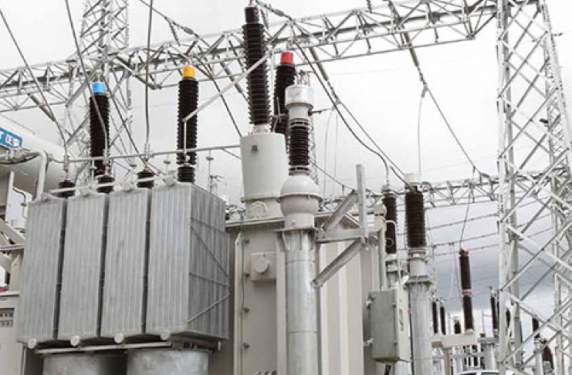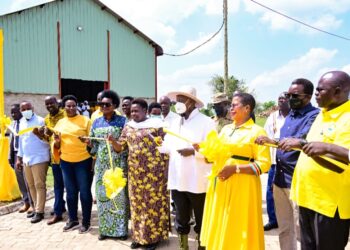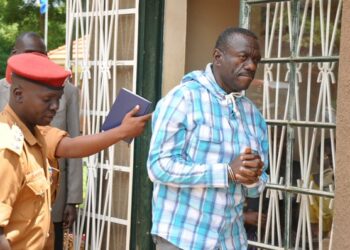At the height of the intensified quest for infrastructure development in the island district of Kalangala, a number of stakeholders started engaging Government of Uganda to provide such services with the state sponsoring for the development.
However, a Private consortium that brought together Infraco – UK and Eleqtra Africa proposed of Government of Uganda a Ugx 128 billion deal that would see the island district have two major Marine Vessels plying the Masaka Kalangala route, the upgrading of Kalangala’s main 66 kilometer road to first class murrum, provision of clean and safe water across all villages on Bugala island and the generation, transmission and operation of a Kalangala power grid that would see Islanders have power on all villages on the main island.
Such generation of power would institute the construction of a 1.6 megawatt hybrid power plant at Bukuzindu, Mugoye Sub County.
The Power plant would be a consorted effort that would see about 1320 solar panels installed, with a battery bank and three generators that would in turn, all provide the hybrid solar – thermal power plant, for whose ground breaking was done in 2012 by then Works Minister Abraham Byandaala.
Upon completion of the construction of the hybrid power plant, the company, with support from Government of Uganda under the Rural Electrification Agency, would institute a power line, that would transmit power to all villages/landing sites on Bugala island (never the less, some until today, do not have power).
The introduction of Kalangala Infrastructure Services power generation would see, then Uganda Electricity Distribution Company Limited – UEDCL leave it’s operating area in Kalangala Town to pave way for the only licensed KIS Ltd offer power.
However, since the introduction of the monopolized KIS power, the tariff for the power generated has since been increasing for quite essentially a bounty of reasons leaving Islanders unable to use power commercially.
For the past 10 years with power generation and transmission, Kalangala Infrastructure Services did not determine the technical and commercial loss values of power, guessing every quarter on how much power is lost, without actual definitive figures.
The technical losses are due to energy dissipated in the conductors, equipment used for transmission line, transformer, sub- transmission line and distribution line and magnetic losses in transformers. Technical losses are normally 22.5%, and directly depend on the network characteristics and the mode of operation.
Also, commercial loss value is also called AT&C loss. AT&C loss is nothing but the sum total of technical and commercial losses and shortage due to non-realization of billed amount. AT&C Loss = (Energy input – Energy billed) * 100 / Energy input.
However, with the failure to make such determinants, both the company and the regulator sat back until the funders, under Infraco, Power Africa, who have spent the last 13 years without dividends on their initial investment revenue angered by such failures prompting an immediate inquest on the reason the Kalangala Power component was making excessive losses.
“New Poles were being instituted each time time, some poles replaced and everyone was asking why such utilities had dilapidated without achieving the intended objective. An investigation was done and excess money was being shared amongst top managers of the company, some of whom had running contracts, supplying utilities while even flaunting the procurement guidelines,” a source at Kalangala Infrastructure Services said.
Upon instituting an investigation, the funders identified Mr. Hakim Walya to embark on the process of determining the loss value of power. However, towards the report launch in 2022, Mr. Hakim Walya was sacked from the company and denied a chance to table a report on the technical and commercial loss values of the company.
It is alleged, the technical loss value submitted to ERA and the Rural Electrification Agency – REA was at 38% weigh above the actual loss value, said to be at 24.4%. At the time of Walya’s sacking, the commercial loss value had not been determined.
The Uganda National Bureau of Standards had previously, in 2017 declared that the meters being used to bill electricity by the company were substandard and demanded that they are replaced before they could further be used in power billing theft.
In 2020, after 80% of the solar establishment and the Battery bank had been hit hard to a point of no longer being operational, Kalangala Infrastructure Services Manager for the Power Section, together with the top management earmarked the purchase of a Power Equalizer that would be used to keep all excess power on the grid for further use.
The plan was meant to reduce losses met in producing power directly and is not consumed but rather falls away. At the time the idea was instituted, most solar panels were no longer functional while the batteries had been struck down.
“The machines brought were in the first instance duplicated. How would you expect them to operate in such an environment that needed a lightening tower whose funds were swindled in the early stages of the project?” Another source that asked not to be named told this website.
After realizing that the need for a power equalizer was paramount, a research was instituted by the company’s top management to ascertain the best machines to be used.
Later, a meeting was scheduled between the funders of Eleqtra Africa, Infraco, Government of Uganda, the Top Management of the Power sector and the in charge of the Power Plant at the time Mr. Aggrey Kawongolo.
Well as the Power Managers led by Mr. Chris Ochieng argued in favor of the equalizer to be purchased at a cost of Ugx 700 million, Mr. Aggrey Kawongolo opposed the idea vehemently, prompting the KIS Managing Director Mr. John Opondo to call off the meeting over the disagreement.
To pave way for the procurement and later purchase of the equalizer, Aggrey Kawongolo was immediately suspended from the power plant pending investigation for three months and later, dismissed from the company.
A Power Equalizer meant to suit capacitors and help in the reduction of power loss and the reduction of costs of generation of power was purchased at a cost of Ugx 700 million.
Upon the installation of the equalizer, the machine on July 19th 2021 crashed, causing a fire outbreak and a suspension of services by the power generating company to it’s clients.
A root cause analysis done by the KIS Ltd indicates that after the fire outbreak, the Power equalizer purchased and installed a day before had broken down and needed another 400 million for repairs and installation.
“The machine has since never achieved it’s intended objective. More than Ugx 1.2 billion was used to a machine that never worked, leaving residents still struggling with high costs of power,” a source still working at the power plant told this website.
This eventually led to drastic increase in the unit cost of power as it rose from Ugx 873 shillings to more than Ugx 1600 in the last quarter.
This according to the different stakeholders is a high cost of a unit of electricity, compared to other power generating companies such as Wenericle, UMEME, Kilembe and Uganda Electricity Distribution Company Limited.
“So, people are paying the cost of what others embezzled and are now suffering. This requires a parliamentary inquiry that would help find lasting solutions to the island residents.” Says former Kalangala District Chairperson, Willy Lugoloobi.
Currently, several businesses closed in the island district because they could no longer use the power that has always been produced by the KIS Ltd, the power generating company.
So far, fish handling facilities in Dajje, Mwena, Kananansi, Lwabaleega can no longer operate since the ice cannot be produced due to high costs of power generation.
Sources within the company also told this website that to cover up costs and also offer dividends to the different shareholders, KIS is increasing costs of power generation and reducing the costs of operations including cutting on the number of staff is what management is choosing to better earnings.
Sources also accuse companies used on the repairing of dilapidated power lines on asking exorbitant costs for the repairs while several rotten poles for a transmission line were.
Currently, the company is wishing to reduce the costs of power by turning off electricity at midnight until 5.00 am in the morning, an idea that has been vehemently rejected by the island residents.
The residents who also expected that such challenges would be resolved when Government of Uganda connects the vast population of Islanders on Bugala on the National grid through a Marine Cable being constructed remained dismayed when sourced indicated that power from the National Grid will be sold to Kalangala Infrastructure Services at a subside for further transmission at a cost to Islanders.
It is also not clear when the Marine Cable will be completed. In an interaction with the KIS leaders last year, the institution said it is still struggling with high costs of power generation despite the faulty solar panels, batteries and two of the generators at the Power Plant in Kalangala.
Do you have a story in your community or an opinion to share with us: Email us at editorial@watchdoguganda.com













